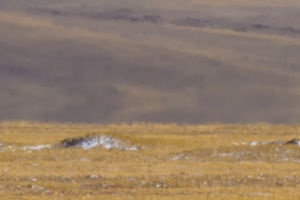The peacock is a large, brightly colored bird known for its unique and beautiful plumage.
Here are some common habits of peacocks:
1. Display of Feathers: One of the most famous habits of peacocks is their tendency to display their beautiful, vibrant plumage to attract a mate.
During mating season, male peacocks fan their tail feathers in stunning iridescent blues and greens.
2. Roosting in trees: Peacocks are known to roost in trees, especially at night. This helps protect them from predators and provides them with a comfortable place to sleep.
3. Foraging: Peacocks are omnivorous and will eat a variety of foods, including insects, small mammals, reptiles, and plants. They are often seen foraging on the ground or in low bushes.
4. Vocalization: Peacocks are known for their loud and distinctive calls that can be heard even from far away. They use their calls to communicate with other birds and to establish their territories.
5. Sunbathing: Peacocks often like to bask in the sun, especially in the early morning or evening when the sun is not too hot. They spread their wings and feathers to absorb as much sunlight as possible.
6. Nest building: The female peacock or peacock will use leaves, twigs, and other materials to build her nest on the ground. They usually lay 3-5 eggs, which incubate for about a month until hatching.
Overall, peacocks are fascinating creatures with a variety of interesting habits and behaviors.
Peacocks are native to South Asia, especially India, Sri Lanka, and parts of Southeast Asia. However, they have been introduced to many other parts of the world as ornamental birds and can now be found in many countries around the world.
For example, in the United States, peacocks can be found in many zoos, wildlife parks, and private collections. They are also commonly kept as pets on private property, especially in rural areas.
In Europe, peacocks can be found in many zoos and safari parks, and they are sometimes kept as ornamental birds in private gardens or estates.
In countries such as Australia and New Zealand, peacocks have been introduced and are considered pests due to their potential impact on native ecosystems.
In countries where peacocks are not native, it is important to ensure that they are not released into the wild as they can negatively impact local ecosystems and wildlife. In general, peacocks can be found in many different countries around the world, but their distribution is largely determined by human activities such as introductions and translocations.
Peacocks, including peahens, are not currently considered an endangered or threatened species. However, they remain protected by various national and international laws, and their populations are affected by habitat loss, hunting, and illegal trade.
In India, the Indian Peacock (Pavo cristatus) is the national bird and they are protected under the Wild Animals Protection Act 1972. The Indian peacock is listed as a species of least concern on the IUCN Red List of Threatened Species, indicating a stable population.
Other peacock species, such as the green peacock (Pavo muticus) and the Congo peafowl (Afropavo congensis), are listed as Vulnerable and Endangered, respectively, on the IUCN Red List.
Overall, while the peacock is not currently endangered, continued conservation efforts are necessary to protect its population from threats such as habitat loss, hunting, and illegal trade.


